Features of the installation of the outdoor unit of the air conditioner
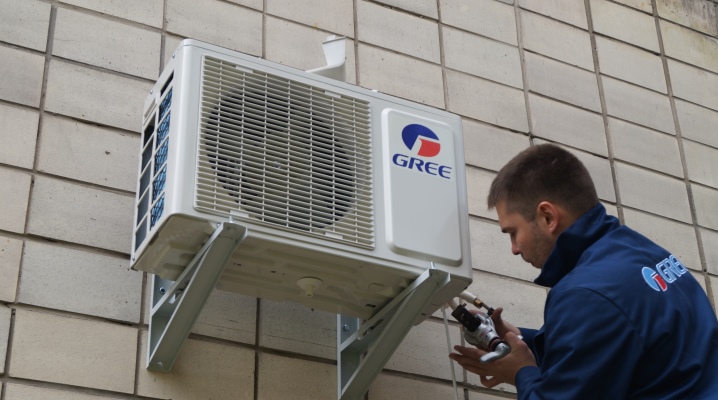
The air conditioner consists of two units: indoor and outdoor. Each of them has its own functions. The outdoor device is most often located on the facade of the house, balcony or loggia and is able to absorb heat during evaporation and release it during condensation. The installation process of this unit has its own subtleties and nuances. Let's talk about them in more detail in our article.
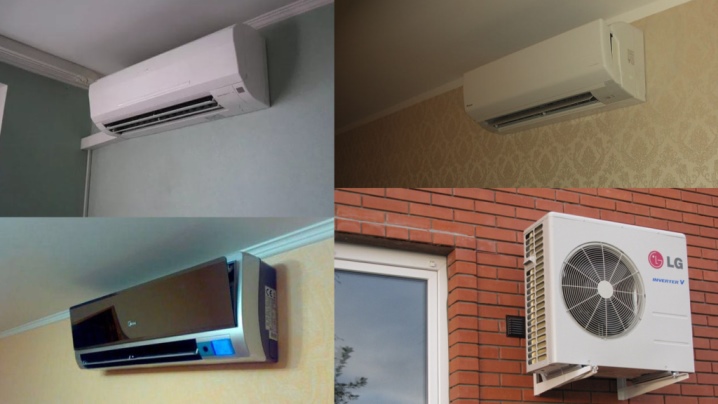
Design features
Split systems can be used as an example. Their outdoor unit includes several main components, including a compressor, a control board, a valve, a fan, a radiator, a freon filter, a protective cover and connections on the fittings.
With the help of a compressor, freon is compressed, and its movement along the refrigeration circuit is also supported. The basis can be a piston or a spiral. Models with a piston have a lower price, but they are not reliable enough. This is especially true in the cold season, when the temperature drops outside. The four-way valve is provided in those systems that operate both for cold and heat.
If the heating mode is working, the valve's task is to change the direction of movement of the freon. The outdoor unit will not heat up as usual, but will provide cooling.
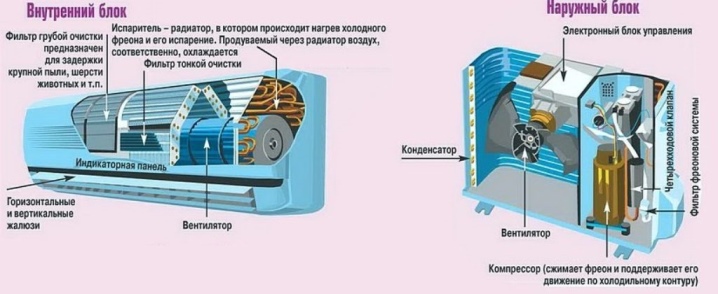
Inverter outdoor units require a control board. In other cases, the electronics system is housed internally to prevent damage due to changes in temperature and humidity levels.
The fan serves to cool the condenser in time. If we are talking about budget models, it will have one rotation speed, while in more expensive models it depends on the outside temperature. Most often, fans have 2-3 speeds, which are regulated rather smoothly.

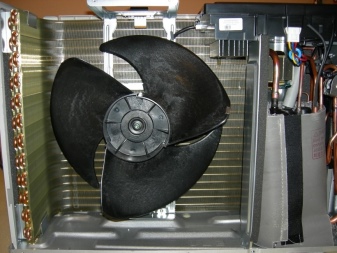
As for the radiator, it is due to it that the cooling and condensation of freon occurs. The freon filter, on the other hand, provides protection from copper chips and other elements that clog the air conditioner during installation and operation. but if mistakes were made during the installation process, then a significant amount of dirt can get inside, which even this system cannot cope with.
The protective cover hides the terminal block, and in some cases the connections on the fittings, to which, in turn, the connectors of both air conditioner units are connected.
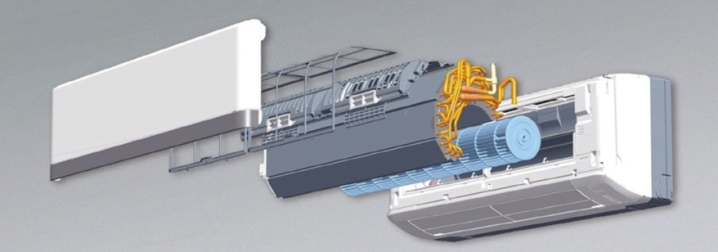
Basic installation rules
It is necessary to hang the outdoor unit of the cooling system correctly, therefore, you will need to follow the instructions. There are devices that can be fixed to the ceiling, but some are not allowed. Open air must flow to the cooling radiator, so the device should be placed outdoors or, for example, on a glazed balcony where a window opens. In a closed room, it will simply overheat, which will lead to breakdown.
The air conditioner will need to be charged with refrigerant. It is required to install the device in such a way that in the future the master does not have problems with access to the valves located on the side, most often on the left side. The same goes for the pump.
If you do not comply with this condition, you will have to contact professional climbers if problems arise.
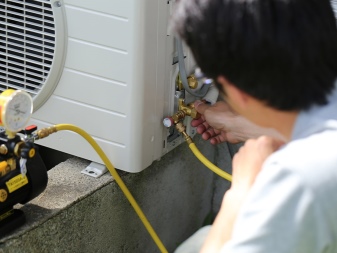
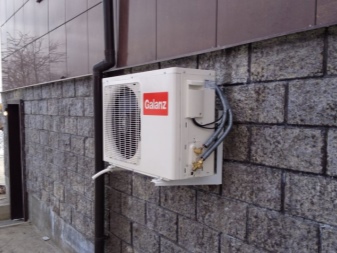
The maximum noise figure should not exceed 32 dB, this point must be checked.Condensation must not flow down the walls, get onto the visor or passers-by. It is necessary to pay attention to such an indicator as the strength of the walls. The block weighs quite a lot, so it cannot be fixed on an insulation layer, cladding or aerated concrete-based surface. The fasteners must be securely fixed.
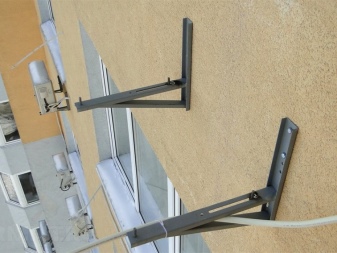
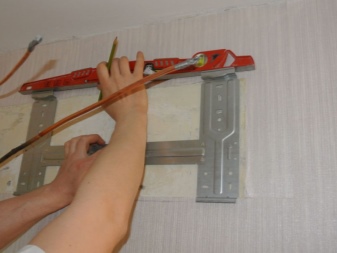
To prevent the compressor from overheating, the unit must be hung at a distance of more than 10 centimeters from the wall, no more, otherwise direct sunlight will fall on the rear hidden wall of the device, which is highly undesirable.
Nothing should interfere with blowing. The length of the piping between the units must comply with the parameters specified by the manufacturer. It is desirable to provide protection against moisture penetration.
Compliance with the installation of all existing rules will allow the device to function for a long time without failures.
You will also need to think about a set of tools, without which the installation of an external unit will be impossible. For the installation to be done professionally, the master will need a special key.
The difference from other varieties is that its mechanism provides clamping and rotation of the nut, and the magnet does not allow it to fall.
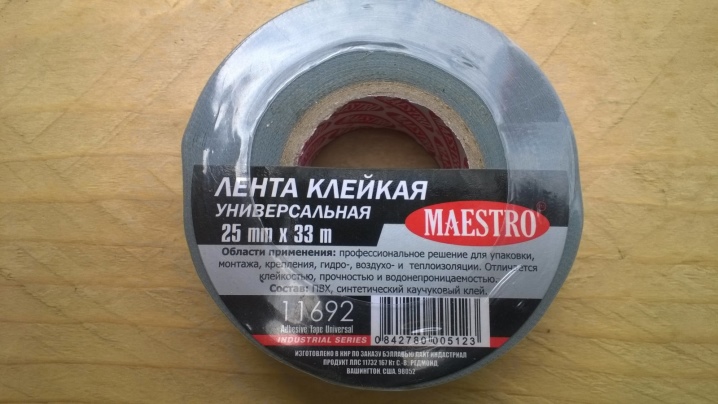
Choosing a location
The construction of modern buildings initially involves the installation of air conditioning systems at the design stage. Special boxes are placed on the facade, and the device will already be placed in this basket. The presence of boxes helps to reduce the likelihood of poor fastening of external units, and they also fit appropriately into the external appearance of the building without harming it.
In the case where there are no boxes, some aspects need to be taken into account. The unit is placed on the wall of the apartment where the air conditioner is located. It should be clarified with specialists whether it is possible to carry out installation on the facade, since the authorities may issue a ban for a number of reasons.
Regardless of which floor is supposed, most often the block is located under the window, slightly below the level of the window sill, or on the side of it. This is not only convenient, but also allows for easy maintenance of the device.
If it is not possible to place the block on the facade, you can take it out to an open balcony, attic or soft roof, and also place it directly on the ground.
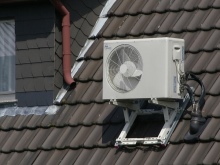
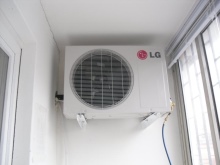
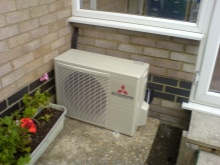
Another interesting option is to place the device in the basement. This is relevant in the case when the dimensions of the route are increased and there is a difference in elevation. If there is heating in the basement, the air conditioning system will help not only cool the space, but also warm it up in cold weather. Good air circulation is essential to avoid overheating of the heat exchanger.
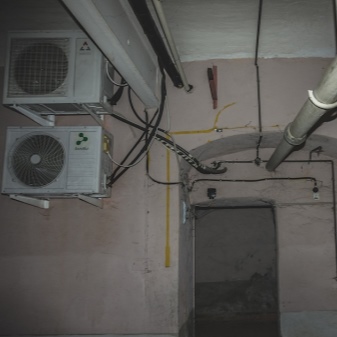
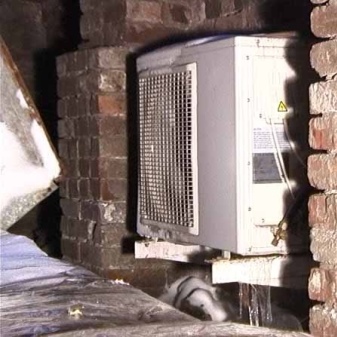
What should be attached to?
Wherever the outdoor unit is installed, it is required to fix it. Usually, brackets, which are two welded strips, act as retainers. They are most often made from a profile with a different section. The load on these elements can be much greater than the weight of the outdoor unit of the air conditioner.
If the device is to be placed on a roof or floor, special stands are suggested. Most often they are made of powder-coated metal, but some prefer to simply fix the blocks to wooden planks. The stand is capable of supporting over 250 kilograms, which means that it can be used even for large industrial air conditioners.
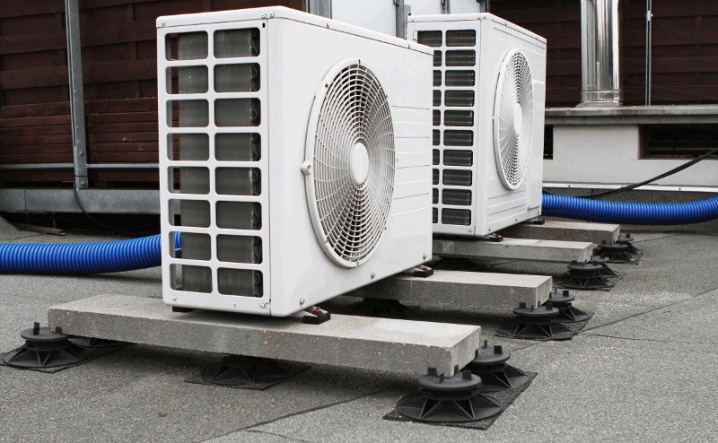
For how to install the outdoor unit of the air conditioner, see below.













The comment was sent successfully.